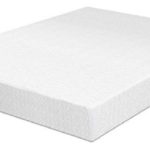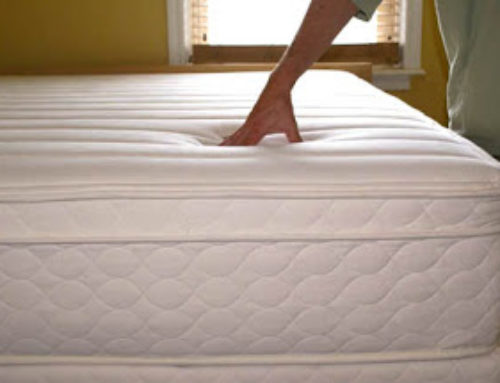When you begin to undertake the task of shopping for a mattress, one of the big key words you will hear/see is foam. Convoluted foam, memory foam, gel infused memory foam, latex foam, organic, the list goes on and on. But, what is this thing we call foam? How is it made and why do I need it? In this blog, we will explore this idea to break down what this mysterious thing is.



Foam is Everywhere
The seats in cars, sofas, recliners, mattresses, pillows, carpet (yes, the pads for carpet are made out of foam), children’s car seats, building insulation, shoe soles, foam can be found everywhere. Chances are that if you sit on it, there is foam in it. Therefore, it is something that you will be unable to avoid (unless you want to sit on wooden seats and floors). But, what foam is most used today? How is it made?
Foam originally was originally made from natural latex taken from the sap of a rubber tree. Foam usage dates back to the Mayans and Aztecs as far back as 500 BC. In the 1900’s, man made, or synthetic, foam began to be created. Today, both natural foam and synthetic foam is used. The most common type in use today is Polyurethane. According to madehow.com, “Consumption of polyurethane in the United States during 1997 was estimated at around 4.8 billion lb (2.18 billion kg), up 13% over 1996 and representing about a third of gloabal consumption.” Even today, polyurethane is the most widely used foam in mattresses and furniture.


The foam manufacturing industry has 2 main ways to measure the difference between foams: the density and firmness. Density is a measurement used to see how durable and supportive a foam is. Measured in pounds (lbs), foams that have a higher density have more foam in it and less air. The more foam you have, the more support you will receive from the foam and the longer it will last. In general, mattress and furniture manufacturers do not publish their foam densities. They are not required to by law because it is classified as proprietary information. However, polyurethane foams should be at least 1.5 density or higher.
The other measurement shows the firmness of a foam. This is where you will see a foam being as soft as a cloud or as hard as a rock. Companies measure this by taking a square block of foam and applying weight to the top of it. They add weight until the block has been compressed by 25%. This test, called the Indention Load Deflection (ILD) test produces a number. The higher the weight, the higher the ILD number and the harder the foam feels. ILD numbers generally range from 15 to 60. A quick note, many people believe that the harder a foam feels, the longer it will last. This is a common misconception. Super hard foams at an ILD of 60 can come in 4.0 density or 1.0 density. The higher density foam always lasts longer.


What about Memory Foam?
Memory foam came on to the scene from a more unlikely source: NASA. Scientists began to develop this new foam as a way to reduce the strain and stress on astronauts as they took off and re entered Earth’s atmosphere. While NASA led the charge in this new industry, it proved too costly at the time. Around the 1980’s, foam manufacturers gained access to the information and refined the formula to make it more cost effective.
Memory foam reacts more slowly. Due to this slow reaction, memory foam provides more pressure relieving properties. When placed in the top, or comfort, layer of the mattress, this allows a softer, more comfortable feel for many people. A quick note, finding an entire memory foam mattress is very difficult. Most manufacturers do not use that because memory foam does not work well as a support layer. Most all foam beds use a high density polyurethane foam as the base layer with the memory foam on top.
Also, memory foam is more heat sensitive than other foams. This means that as the temperature drops, the harder the memory foam will feel. The reverse is also true that warmer temperatures create softer feeling foam. This is due to the fact that memory foam uses a person’s body heat to conform to their body shape. In it’s normal state, this heat will then get transferred back to the user. That is why most people complained that memory foam mattresses were too hot, because they literally would make the sleeper feel more heat. Nowadays, many companies add gel into the production of the foam to stop the heat from going back to the user. A quick note, do not use heat pads with any memory foam on the top layer for an extended period of time. Research has shown that the heat pads can make the memory foam create “dead spot” where they will not longer slowly react to heat and force.


Does it come in Organic?
Just like your favorite grocery items, many mattresses are being created using more organic materials. Foam wise, many companies have a new type of memory foam called latex foam. Latex foam can be made organically from the sap of a rubber tree. It can also be created using a synthetic latex foam. 2 big names out there for Latex foams now are Dunlop and Talalay Latex. Both of these latex foams create a unique feel amongst foams.
As stated previously, standard Polyurethane foam reacts faster to heat and pressure while memory foam reacts slowly providing more pressure relief. Latex foam encompasses the best of both worlds. It provides pressure relief like a memory foam while reacting quickly to your body. Therefore, it eliminates the “sinking” feeling many users complain about with memory foam and does not have the same heat issue as memory foam does. But, the organic components do not end there.
Manufacturer’s recycle steel to create spring systems for organic mattresses, while also using things such as wool for flame retardants and cotton coverings. However, a word of warning, not all organics are the same. Organic mattresses can come made with 85% organic materials (often cited as Organic Mattresses), 70% organic materials (Made with Organic) or even 30% organic materials (made from organic materials). You may notice that there is no 100% organic mattress. If you are in the market for an organic mattress, check how the materials were made and many truly organic manufacturer’s will be backed by programs like the USDA National Organic Program.
So is Foam safe?
After going over all this, we come down to the important question. Is foam in mattresses safe or will I need to get used to sleeping on a wood pallet on the floor? The answer is foam is safe. Any company producing foam in the United States has to follow strict guidelines on the chemicals that they have to use and safe ways of handling the creation process. Companies have suffered injunctions and worse for not following these guidelines. In fact, a recent study by the EPA stated that Polyurethane used in items such as mattresses and pillows are “cured.” This means that any chemicals used in them are non-toxic by the time they are sold. Also, if you want to make sure that the company making your mattress is using best practices, CertiPur-US is an organization that keeps a list of all companies that are safe for you and your family to use.
Thanks!
Long’s Furniture World
P.S.
If you want to learn more, check out these sites for more information about foam and which ones are safe to use.
https://sleep-geek.com/Video/Video?videoId=2841>
http://www.madehow.com/Volume-5/Foam-Rubber.html
http://memoryfoammattress.org/how-is-memory-foam-made/
http://www.sleepjunkie.org/are-memory-foam-mattresses-safe/
http://certipur.us/about-the-seal/
https://dii.americanchemistry.com/Resources/Frequently-Asked-Questions/#Consumer-Safety
http://www.sleepinglikealog.com/mattresses/mattress-101/how-to-buy-an-organic-mattress




